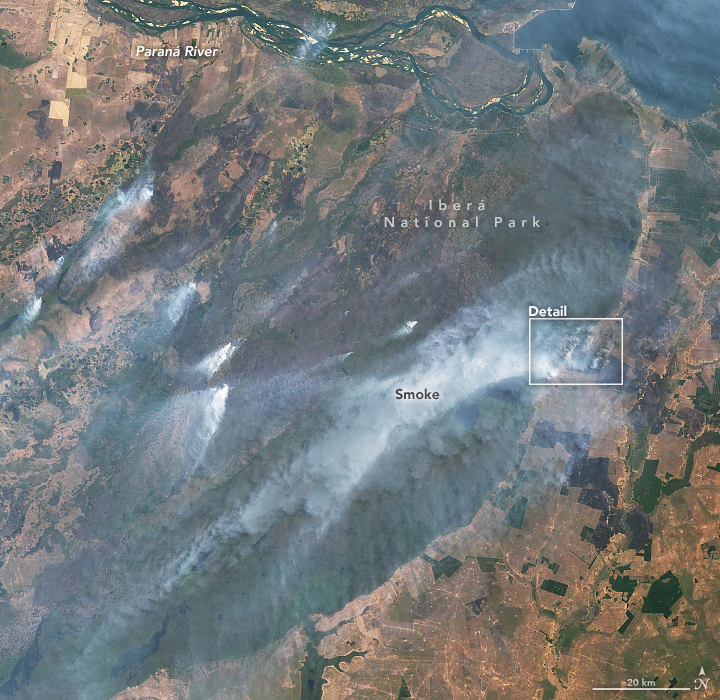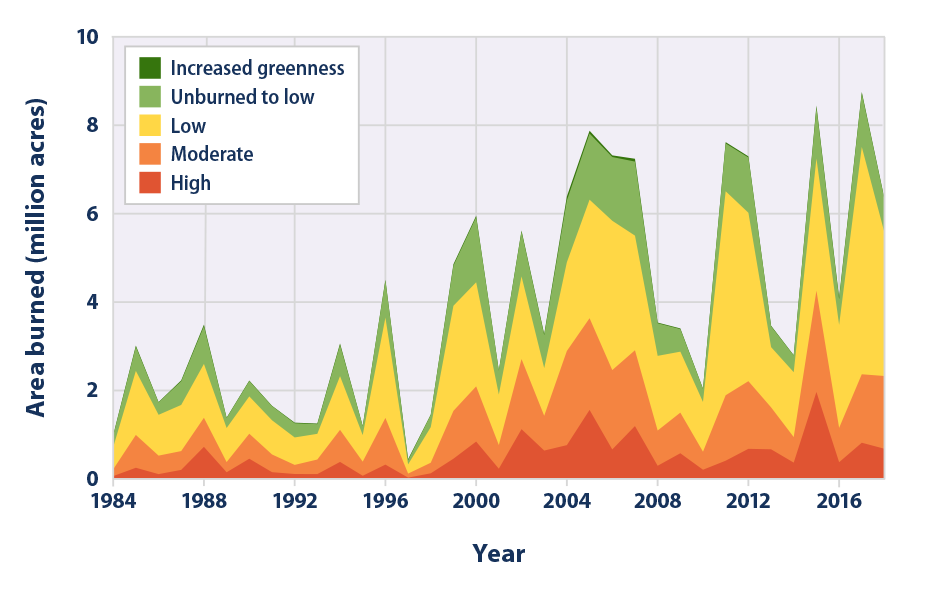
Wildfire risk will rise
The United Nations released a report this morning (February 23, 2022) saying we can expect uncontrollable wildfires to increase in this century. Significantly, the projections are a 14% increase by 2030, 30% by 2050 and 50% by the end of the century. It’s not surprising, however, given that wildfires in recent years caused increasing and headline-grabbing levels of damage. Moreover, the scientists said even deep cuts to greenhouse emissions will not prevent the expected uncontrollable wildfire increase. In addition, communities are not prepared for the rising threat of damages from wildfires, the work found.
The report is called Spreading like Wildfire: The Rising Threat of Extraordinary Landscape Fires. You can download it here. It’s conducted in partnership with the nonprofit GRID-Arendal, based in Norway. In the long run, it suggests that even Arctic and other regions previously unaffected by wildfires will be experiencing wildfires later in this century.
EarthSky 2022 lunar calendars available! Order now. Going fast!
Why?
The report cites two reasons, specifically: climate change and land-use change.
Notably, the U.N. said in a statement that the new study suggests a need for a radical change in government spending on wildfires. In particular, it suggests a shift in investments from reaction and response to prevention and preparedness. The U.N. said:
The publication calls on governments to adopt a new ‘Fire Ready Formula,’ with 2/3 of spending devoted to planning, prevention, preparedness, and recovery, with 1/3 left for response. Currently, direct responses to wildfires typically receive over half of related expenditures, while planning receives less than 1%.
To prevent fires, authors call for a combination of data and science-based monitoring systems with indigenous knowledge and for a stronger regional and international cooperation.
The scientists released the report before the resumed fifth session of the U.N. Environment Assembly (UNEA-5.2), which will convene in Nairobi between February 28 and March 2, 2022.

Prevention and preparedness
For this reason, Inger Andersen, UNEP Executive Director, told the Washington Post Capital Weather Gang:
Current government responses to wildfires are often putting money in the wrong place. Those emergency service workers and firefighters on the frontlines who are risking their lives to fight forest wildfires need to be supported.
We have to minimize the risk of extreme wildfires by being better prepared: invest more in fire risk reduction, work with local communities, and strengthen global commitment to fight climate change.
Impeding sustainable development
Additionally, you may have heard of the 17 U.N. Sustainable Development Goals. The U.N. formulated these goals in the hope of creating a more equitable and healthy world for humans and living creatures. According to the U.N., wildfires disproportionately affect the world’s poorest nations. Furthermore, they impede progress towards the 17 Goals and deepen social inequalities. That’s because, primarily, the impact of wildfires extends for days, weeks and even years after the flames subside. The U.N. said:
– Inhaling wildfire smoke directly affects people’s health, causing respiratory and cardiovascular impacts and increased health effects for the most vulnerable;
– The economic costs of rebuilding after areas are struck by wildfires can be beyond the means of low-income countries;
– Wildfires’ pollutants degrade watersheds; they also can lead to soil erosion causing more problems for waterways;
– Wastes left behind are often highly contaminated and require appropriate disposal.
Wildfire risk and climate change
In addition, the U.N. pointed out that wildfires and climate change are “mutually exacerbating”:
Wildfires are made worse by climate change through increased drought, high air temperatures, low relative humidity, lightning and strong winds resulting in hotter, drier and longer fire seasons. At the same time, climate change is made worse by wildfires, mostly by ravaging sensitive and carbon-rich ecosystems like peatlands and rainforests. This turns landscapes into tinderboxes, making it harder to halt rising temperatures.
Animal deaths
Also, the report mentioned that Earth’s non-human life isn’t likely to be spared from the effects of increasing wildfires:
Wildlife and its natural habitats are rarely spared from wildfires, pushing some animal and plant species closer to extinction. A recent example is the Australian 2020 bushfires, which are estimated to have wiped out billions of domesticated and wild animals.
Read more from the U.N. about the new wildfire report.
Bottom line: A new U.N. report says wildfire risk will rise. The report projects a 14% increase by 2030, 30% by 2050 and 50% by the end of the century.











